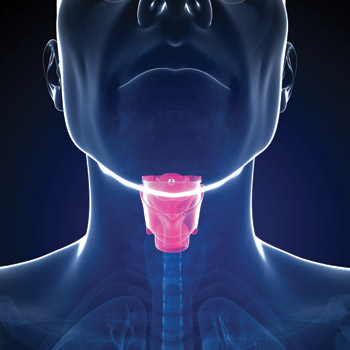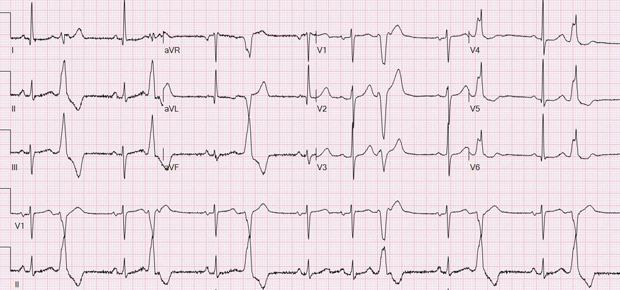Handling hoarseness, hearing problems in primary care
Internists can help patients cope with common ENT conditions like hoarseness, tinnitus, and hearing loss.
Hoarseness may seem like nothing more than a nuisance, but it's a common, and costly, condition, according to Erica R. Thaler, MD. At a session at Internal Medicine Meeting 2021: Virtual Experience, Dr. Thaler offered pearls for this and other ENT conditions that primary care physicians frequently encounter, including tinnitus and hearing loss.
Hoarseness
About 6.7% of the U.S. population may have hoarseness at any one time, more commonly older adults and women, who have a prevalence of about 20% to 30%, said Dr. Thaler, who is a professor and interim chair of the department of otorhinolaryngology–head and neck surgery at the University of Pennsylvania in Philadelphia.

“It is, as you might imagine, often occupationally related, and the portion of the U.S. workforce that has high occupational voice use is about 20%, particularly teachers and salespeople,” she said. “Vocal problems account for roughly 70 million lost workdays annually in the United States, costing $13.5 billion a year in direct costs. So it's a big problem.”
Hoarseness is most commonly caused by inflammation, followed by viral illness or another infectious cause. Any upper respiratory virus can be the culprit, including coronaviruses, but it can also be linked to human papillomavirus (HPV), specifically strains 6 and 11, and laryngopharyngeal candidiasis, which is common with steroid use for respiratory diseases, Dr. Thaler said.
Laryngopharyngeal reflux is another inflammatory cause of hoarseness, although Dr. Thaler considers it to be overdiagnosed. “[It] should really not be diagnosed based on the presence of voice disturbance without typical GERD [gastroesophageal reflux disease] symptoms, including, obviously, heartburn, regurgitation, acidic taste in the mouth,” she said. Diagnosis should also be based on visual signs in the larynx, she added.
Inflammation related to autoimmune diseases such as rheumatoid arthritis, sarcoid, lupus, and granulomatosis with polyangiitis can also cause hoarseness, she noted.
Neoplastic causes of hoarseness, meanwhile, can be benign (e.g., phonotraumatic lesions caused by nodules, hemorrhage, polyps, and fibrous masses or leukoplakia, “literally white plaque on the cords,” Dr. Thaler said) or malignant (squamous-cell carcinoma of the head and neck associated with alcohol and tobacco use).
The differential diagnosis also includes neurologic causes, such as vocal fold paralysis, laryngeal tremor or dystonia, or vocal atrophy, and musculoskeletal causes, such as muscle tension dysphonia or vocal cord fixation. “In terms of how best to evaluate it, with history and exam, you want to consider the onset, the nature, and the course of the dysphonia,” Dr. Thaler said. “As with anything else, medical, social, and occupational history are quite relevant.”
Relevant associated symptoms include any kind of breathing and swallowing disorder, including reflux symptoms, Dr. Thaler advised. She also recommended listening to patients' voices and noting pitch, volume, quality, and respiration. Laryngeal exam should generally be performed if dysphonia fails to resolve within four weeks or if a serious underlying condition is suspected, she noted. For example, any sign of stridor would elevate the urgency for evaluation and laryngeal examination, as would airway compromise or associated aspiration.
Behavioral intervention, including voice rest and vocal therapy with a speech language pathologist, is a key treatment for many causes of hoarseness, Dr. Thaler said. Candidal laryngitis is “very responsive to oral antifungal agents—typically, a dose or two of fluconazole will take care of it—but it has to be accompanied by a cessation of the steroid inhaler, and that may be a challenge in treating asthma or [chronic obstructive pulmonary disease],” she said.
Laryngopharyngeal reflux can be treated with H2 blockers or proton-pump inhibitors, with the latter considered standard of care. “But again, I would say, do not treat this presumptively. It is way overdiagnosed now and really including by us otolaryngologists as well,” Dr. Thaler said.
Respiratory papillomatosis is expected to become a rarer diagnosis. “Presumably, it should be in the process of being reduced by the HPV vaccine in terms of epidemiology, although it's a little early to know whether in fact that's the case. The predictions are that this will be disappearing as a problem over time with broad vaccination,” she said.
One goal of therapy for respiratory papillomatosis is to avoid frequent surgical reduction, so clinicians have tried off-label use of cidofovir, topical or as a local injection, and the biologic bevacizumab. However, these treatments have significant potential side effects, “so the jury's out on their efficacy and effectiveness for long-term use,” Dr. Thaler said.
Spasmodic dysphonia responds well to botulinum toxin injection and may be helped by intensive speech therapy, she noted. “And then for many of the anatomic abnormalities, the lesions, surgical intervention is effective for cure. This can be either office-based for smaller things or in the OR, and these are, generally speaking, fairly minor outpatient procedures,” Dr. Thaler said.
Tinnitus
Tinnitus is defined as perception of sound without an apparent source, Dr. Thaler said. It is most often associated with some hearing loss but may not be correlated with degree of loss. For patients with tinnitus, hearing loss, and an otherwise normal exam, no further workup is necessary. For patients with pulsatile tinnitus, even with a normal exam, MRI or magnetic resonance angiography or CT with venous-phase contrast is indicated to rule out a vascular tumor or malformation, she said.
“As far as treatment goes, there is no magic bullet for tinnitus, there's nothing that will make it go away, but there are ways of helping patients deal with the psychological bother of having it,” Dr. Thaler said. White noise can be used as a distraction, particularly at night, since settings like a quiet bedroom can be problematic. Any modality that restores hearing can help, such as hearing aids, ear surgery, and cochlear implant, and some success has been reported with acupuncture, she noted. In addition, she said, biofeedback and tinnitus retraining may be useful in some patients.
Hearing loss
There are essentially two types of hearing loss, Dr. Thaler said: sensorineural, where the pathology is in the inner ear or along the acoustic nerve in the brain or brainstem, and conductive, where the pathology involves the mechanical apparatus of the ear. Mixed hearing loss involves both of these types.
When taking the history of a patient with hearing loss, assess duration and time course, side of hearing loss, and associated symptoms, such as tinnitus, vertigo or disequilibrium, aural fullness, discharge, pain, and prior surgery, Dr. Thaler said. Examination involves otoscopy, including pneumatic otoscopy, and audiometry, both pure-tone testing and speech discrimination.
A tuning fork can be a useful tool for clinicians who don't have access to audiometry, Dr. Thaler said. To conduct the Weber test with a tuning fork, put it at midline in the forehead, she instructed. If sound is heard equally in both ears, the patient's hearing is similar on both sides. If it's louder on one side, the patient likely has ipsilateral conductive loss or contralateral sensorineural hearing loss.
To conduct the Rinne test, hold the tuning fork by the ear, behind the ear, or touching the mastoid. “If you hold it by the ear, that's air conduction; behind is obviously bone conduction. So if the air conduction is louder than bone, then that's normal or sensorineural hearing loss. If bone conduction is louder than air, then it would be conductive hearing loss,” Dr. Thaler said. “So you put those two together, and you should be able to figure out whether the patient's hearing [loss] is sensorineural or conductive, which makes a difference in terms of what the etiology is.”
Imaging, meanwhile, is used only in certain circumstances, Dr. Thaler explained: CT of the temporal bones for conductive hearing loss, and MRI of the brain and internal auditory canals for sensorineural hearing loss.
Treatment of hearing loss should prioritize optimizing communication, Dr. Thaler said. Adequate visualization of the face and lip reading are helpful, although difficult during a pandemic with widespread use of face masks, she noted. External amplification devices such as hearing aids can be very effective, although they work best if patients' word discrimination is good. “If it's not, then the patient won't be happy with it because you're essentially amplifying sound that they're not really able to discriminate very well anyway, and it's just going to be frustrating,” Dr. Thaler said.
Surgical interventions vary according to type of hearing loss, she said. Middle ear surgery and mastoid surgery can be used to treat conductive loss, particularly if it's caused by infection. Cochlear implants treat severe to profound sensorineural loss, while bone conduction implants are used to treat conductive loss or unilateral sensorineural loss. “It's very disconcerting to have hearing loss unilaterally, it prevents you from localizing sound in space, and so patients do have bone conduction implant to help with that,” Dr. Thaler said.
Dr. Thaler also discussed management of sudden sensorineural hearing loss, defined as unexplained unilateral sensorineural hearing loss over a period of time less than 72 hours, with or without vertigo. This condition affects about 20 per 100,000 persons per year, she said.
If a patient presents with hearing loss, and the otoscopic exam is normal, “then get an audiogram immediately,” she stressed. “And the reason for this is that there is a time window to effective treatment.” An MRI of the brain and internal auditory canals should also be performed to rule out retrocochlear pathology, she said.
The generally accepted therapy for sudden sensorineural hearing loss is oral steroids tapered over a 10- to 14-day period (e.g., prednisone, 60 mg/d for the first four days, then tapered by 10 mg every two days), if started within the first several weeks of onset, with serial audiograms done during that time to assess efficacy, Dr. Thaler said. Transtympanic steroids may be an option for patients who cannot tolerate high steroid doses, but antiviral medications are not effective.
“And I mentioned there's a window. … None of this treatment works past four weeks,” she said. “So it is important to get these referrals, and quickly.”





